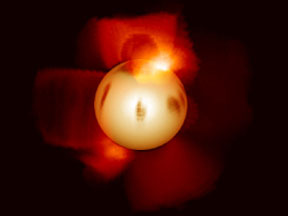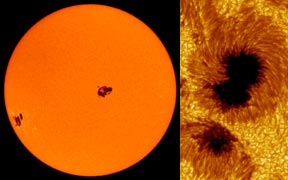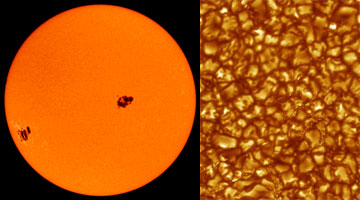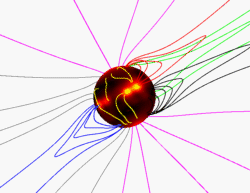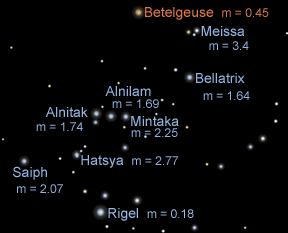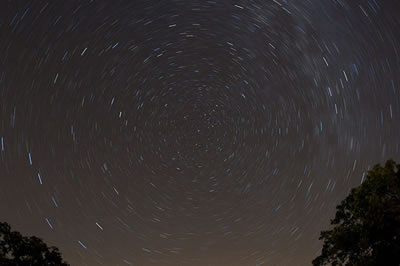Click on image for full size
Image courtesy A. Cameron, M. Jardine and K. Wood, University of St Andrews.
Starspots
You may have heard of sunspots that sometimes dot the "surface" of the nearest star, our Sun. Well, other stars have spots too. They are called starspots and are relatively cool, dark regions on the visible "surfaces" of some stars.
Sunspot formation is apparently a result of the tangling of the Sun's magnetic fields due to the Sun's rotation. The powerful magnetic fields on other stars are also thought to generate starspots.
The Sun is roughly 5 billion years old and rotates once every 25 days. Most of the stars upon which starspots have been "observed" are young and rotate rapidly. The star AB Doradus has rotational period of just 12.4 hours (it spins nearly 50 time faster than the Sun!) and is only 30 million years old. Another spotted star, EK Draconis, turns once every 2.7 days and is 100 million years old.
Astronomers have even observed starspots on binary star systems (double stars). This is especially the case for binaries which orbit very close to each other, and may result from interactions between the two stars. The binary system VW Cephei is a remarkable case; spots cover some 66% of the surface area of one partner and 55% of the other, and both stars appear to have large spots at their poles.
One active red giant star, HD 12545, has a HUGE starspot. The single spot covers 11% of the entire surface area of the giant star, which has a radius 11.4 times the size of our Sun. This gigantic elliptical spot covers an area 10,000 times bigger than the largest sunspots observed on the Sun.
Stars are so far away that their images, even in the largest telescopes, are much too small for us to directly view starspots. Astronomers have to "observe" starspots indirectly? Please use the button bar at the top of the page to read more about these techniques at the Advanced level of text.
Just as the number and locations of sunspots vary over the course of the sunspot cycle, some astronomers are beginning to study similar variations in starspot counts and locations on certain stars.


